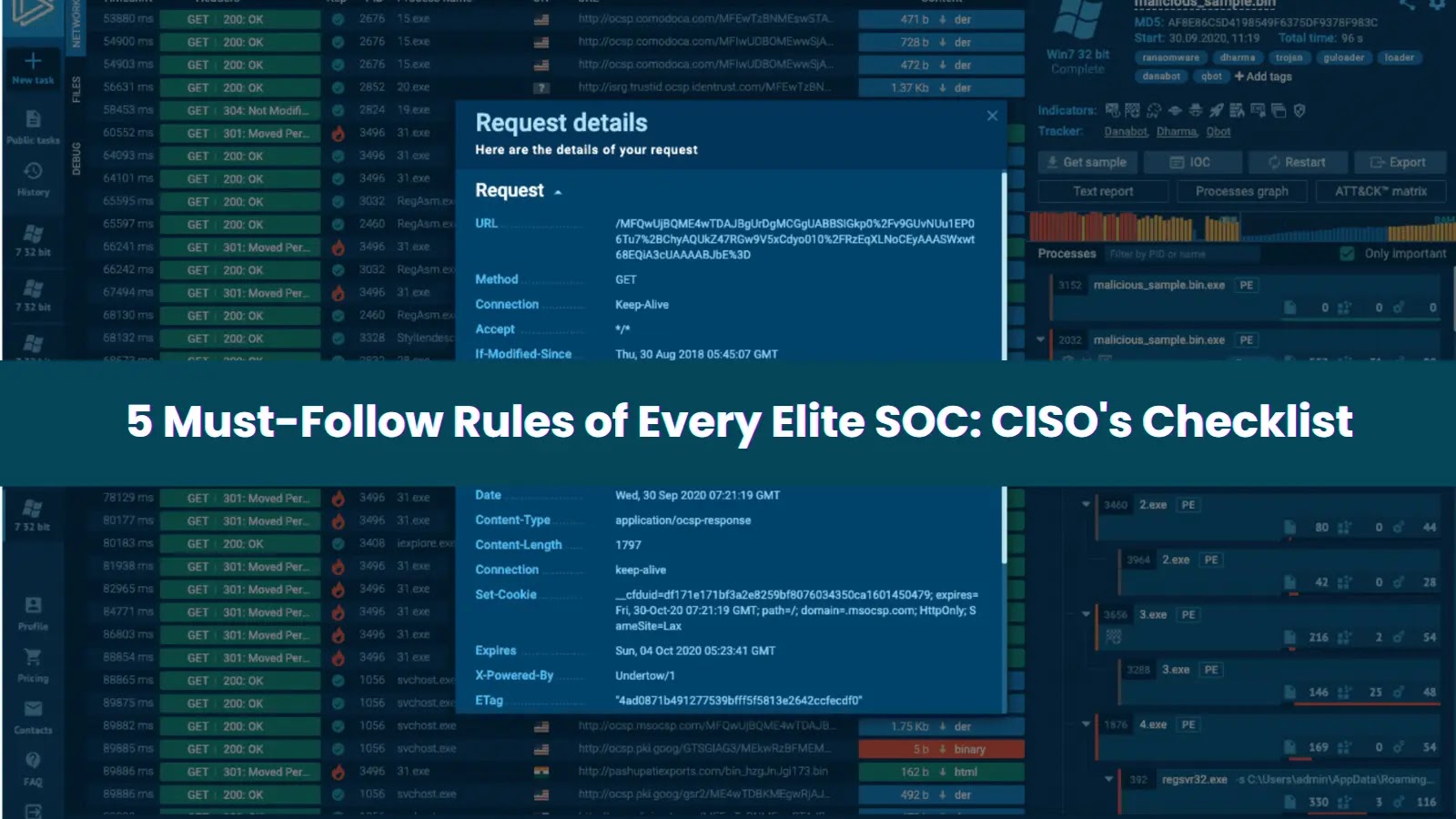
5 Must-Follow Rules of Every Elite SOC: CISO’s Checklist
The silence in a Security Operations Center (SOC) after a critical alert hits can be deafening. In that tense moment, security analysts hold their breath, eyes fixed on screens, searching for context. Is it a true threat, a false positive, or has the adversary already gained a foothold? The stark difference between a reactive, overwhelmed SOC and a proactive, elite one becomes immediately apparent. One scrambles for answers, while the other moves with synchronized precision, sharing critical intelligence and executing predefined protocols.
For Chief Information Security Officers (CISOs), building such an elite SOC is paramount in the relentless battle against sophisticated cyber threats. It’s not just about implementing the latest Security Information and Event Management (SIEM) solutions or hiring skilled analysts; it’s about establishing fundamental principles that foster efficiency, agility, and uncompromising security. This guide outlines five must-follow rules that form the bedrock of every high-performing SOC, providing a crucial checklist for any CISO aiming to elevate their cybersecurity posture.
1. Proactive Threat Hunting & Intelligence Integration
An elite SOC doesn’t just react to alerts; it actively seeks out threats. This involves dedicated threat hunting, where analysts (or threat hunters) use their expertise and advanced tooling to search for anomalous activities and Indicators of Compromise (IOCs) that might otherwise evade automated detection. Integrating real-time threat intelligence feeds from various sources—governmental agencies, private vendors, and industry-specific groups—is critical. This intelligence provides invaluable context, allowing the SOC to anticipate attacks, understand adversary tactics, techniques, and procedures (TTPs), and validate alerts more efficiently. For instance, knowledge of a new zero-day exploitation of a common vulnerability like CVE-2023-2825 can trigger immediate proactive searches for relevant logs or network traffic patterns.
2. Contextualized Alert Prioritization & Triage
Alert fatigue is a genuine problem in many SOCs. A deluge of noisy, low-fidelity alerts can obscure genuine threats. An elite SOC implements robust alert prioritization mechanisms that go beyond simple severity scores. This means incorporating contextual information about the affected assets, their value to the organization, the business impact of potential compromise, and relevant threat intelligence. Automated enrichment processes can add critical data points to each alert, allowing analysts to quickly determine the true urgency and allocate resources effectively. Without proper context, even a seemingly critical alert, such as an attempted exploit against CVE-2023-23397, could be misinterpreted if the targeted system is non-critical or already patched.
3. Streamlined Incident Response & Automation
Speed is paramount in incident response. An elite SOC possesses well-defined, continuously refined incident response playbooks for common attack scenarios. These playbooks outline clear roles, responsibilities, and step-by-step procedures, minimizing confusion and accelerating containment and eradication efforts. Crucially, they embrace automation. Security Orchestration, Automation, and Response (SOAR) platforms can automate repetitive tasks like enrichment, initial containment, and even certain remediation steps, freeing up analysts for more complex cognitive tasks. Automating responses to known threats, especially those exploiting vulnerabilities like CVE-2024-2133, can drastically reduce dwell time and potential damage.
4. Continuous Skill Development & Knowledge Sharing
The cybersecurity landscape evolves at an astonishing pace. What was a cutting-edge defense yesterday might be obsolete today. Elite SOCs prioritize continuous learning and professional development for their analysts. This includes regular training on emerging threats (e.g., new ransomware tactics, advanced persistent threats), new security tools, and updated methodologies. Fostering a culture of knowledge sharing, where analysts routinely debrief on incidents, share findings from threat hunts, and cross-train on different tools and techniques, enhances the entire team’s capabilities. This collaborative environment ensures that the collective intelligence of the SOC is always at its peak.
5. Measurement, Reporting & Continuous Improvement
You can’t manage what you don’t measure. An elite SOC meticulously tracks key performance indicators (KPIs) and metrics, such as Mean Time To Detect (MTTD), Mean Time To Respond (MTTR), false positive rates, and incident volume. Regular reporting to leadership provides transparency and demonstrates the SOC’s value. More importantly, these metrics fuel a continuous improvement cycle. By analyzing past incidents, identifying root causes, and evaluating the effectiveness of their processes and tools, SOCs can adapt and refine their strategies. Post-incident reviews, especially after dealing with significant outbreaks like those leveraging CVE-2024-2067, are invaluable opportunities for learning and hardening defenses.
Conclusion
Building an elite Security Operations Center is an ongoing journey, not a destination. It demands investment in technology, people, and processes. By meticulously adhering to these five rules — embracing proactive threat hunting, contextualizing alerts, streamlining incident response with automation, fostering continuous learning, and committing to data-driven improvement — CISOs can transform their SOC into a formidable force. This transformation ensures that when the next critical alert strikes, the room doesn’t hold its breath in fear, but instead moves with the confident, coordinated precision of a truly elite team.





